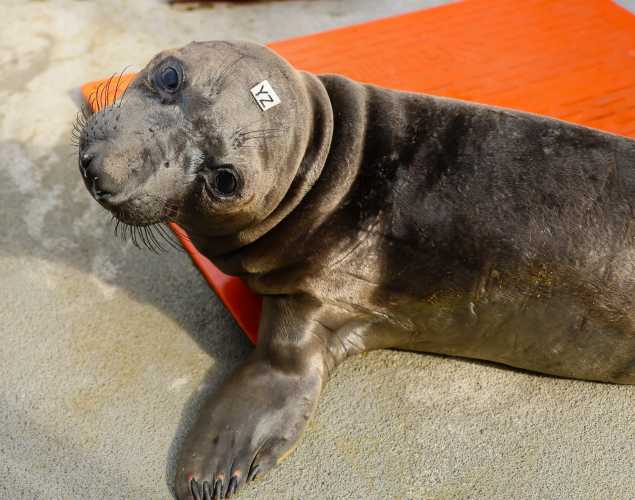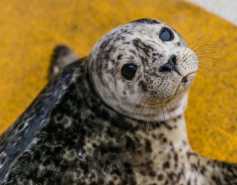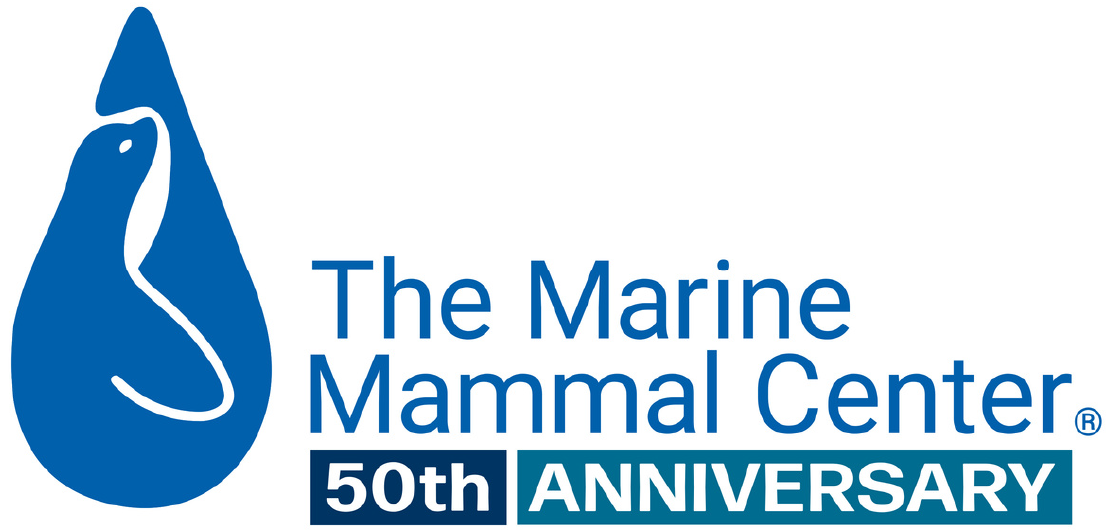
Endocrine Response to Realimentation in Young Northern Elephant Seals
- Malnutrition
Abstract
Most organisms undergo changes in their environment, both predictably and unpredictably, which require them to alter priorities in nutrient allocation with regards to food availability. Species that more predictably encounter extended periods of limited food resources or intake while mitigating the negative effects of starvation are considered to be fasting adapted. Northern elephant seals (NES) are one such species and routinely undergo extended periods of fasting for breeding, molting, as well as a post-weaning fast at 6 to 8 weeks of age. However, during unusual times of nutritional deprivation, animals may enter stage III fasting. While fasting and foraging in this species has been extensively studied, realimentation following fasting beyond normal life history parameters has not been investigated. In this study, changes in ghrelin, growth hormone (GH), and insulin-like growth factor (IGF)-I were compared across 8 weeks of realimentation following emaciation in three age classes: neonates, post-molt pups, and yearlings. Longitudinal changes in hormone profiles indicate that neonate and post-molt pups are slow to recover mass and positive energy balance despite an energy dense diet fed at 10% body mass. In addition, ghrelin and GH concentrations remained elevated in post-molt pups compared to other age classes. Changes in hormone concentrations early in realimentation indicate that yearling animals recover more rapidly from periods of nutritional deprivation than do younger animals. Overall, this suggests that the ability to regulate metabolic homeostasis with regards to nutrient allocation may develop over time, even in a species that is considered to be fasting adapted.
Dailey, R.E., Fontaine, C. M., Avery, J. P. 2016. Endocrine response to realimentation in young northern elephant seals (Mirounga angustirostris): Indications for development of fasting adaptation. General and Comparative Endocrinology 235(2016): 130-135.
Related Publications
{"image":"\/Animals\/Patients\/Harbor seals\/hs-by-bill-hunnewell-c-the-marine-mammal-center-3.jpg","alt":"harbor seal pup","title":"Physiological Responses to Treating Malnutrition in Harbor Seal Pups","link_url":"https:\/\/www.marinemammalcenter.org\/publications\/physiological-responses-to-treating-malnutrition-in-harbor-seal-pups","label":"Research Paper"}

{"image":"\/Animals\/Patients\/Harbor seals\/hs-by-bill-hunnewell-c-the-marine-mammal-center-6.jpg","alt":"a group of harbor seals in the water","title":"Evaluating Whether Lactate Levels in the Blood Can Predict Recovery","link_url":"https:\/\/www.marinemammalcenter.org\/publications\/evaluating-whether-lactate-levels-in-the-blood-can-predict-recovery","label":"Research Paper"}

{"image":"\/Animals\/Wild\/Other species\/cropped-images\/orca-pod-shutterstock-691-0-4025-3143-1622591664.jpg","alt":"pod of killer whales surfacing","title":"Review of Research on Killer Whales to Detect Evidence of Poor Body Condition","link_url":"https:\/\/www.marinemammalcenter.org\/publications\/review-of-research-on-killer-whales-to-detect-evidence-of-poor-body-condition","label":"Research Paper"}

Review of Research on Killer Whales to Detect Evidence of Poor Body Condition
Read More{"image":"\/Animals\/Patients\/California sea lions\/2020\/cropped-images\/csl-boycrus-by-bill-hunnewell-c-the-marine-mammal-center-0-0-3110-2429-1603927870.jpg","alt":"California sea lion pup","title":"Intraperitoneal Dextrose Administration to Northern Fur Seal Pups in Hypoglycemic Crisis","link_url":"https:\/\/www.marinemammalcenter.org\/publications\/intraperitoneal-dextrose-administration-to-northern-fur-seal-pups-in-hypoglycemic-crisis","label":"Research Paper"}

Intraperitoneal Dextrose Administration to Northern Fur Seal Pups in Hypoglycemic Crisis
Read MoreRelated News
{"image":"\/Animals\/Wild\/Harbor seal\/cropped-images\/01-hslucinda2934releasephoto-by-john-beltran-c-the-marine-mammal-center-16-0-0-1270-992-1734387848.jpg","alt":"A Pacific harbor seal moves into the ocean.","title":"From Rescue to Release: Marine Mammal Patients Seen Thriving in the Wild","link_url":"https:\/\/www.marinemammalcenter.org\/news\/from-rescue-to-release-marine-mammal-patients-seen-thriving-in-the-wild","label":"Patient Update","date":"2024-12-17 12:06:08"}

From Rescue to Release: Marine Mammal Patients Seen Thriving in the Wild
December 17, 2024
Read More{"image":"\/Animals\/Patients\/Harbor seals\/2024\/cropped-images\/hs-sandia-by-bill-hunnewell-c-the-marine-mammal-center-313-14-4124-3222-1713562157.jpg","alt":"A newborn seal pup with a fluffy lanugo coat looks up. ","title":"Pupping Season Spotlight: Caring for an Orphaned Harbor Seal Pup","link_url":"https:\/\/www.marinemammalcenter.org\/news\/pupping-season-spotlight-caring-for-an-orphaned-harbor-seal-pup","label":"Patient Update","date":"2024-04-22 02:00:00"}

Pupping Season Spotlight: Caring for an Orphaned Harbor Seal Pup
April 22, 2024
Read More{"image":"\/Animals\/Wild\/Gray whale\/cropped-images\/gray-whale-muir-beach-c-the-marine-mammal-center-66-2-1533-1198-1617991349.jpg","alt":"gray whale in shallow water","title":"LA Times: Starvation Has Decimated Gray Whales - Can the Giants Ever Recover?","link_url":"https:\/\/www.marinemammalcenter.org\/news\/la-times-starvation-has-decimated-gray-whales-can-the-giants-ever-recover","label":"In the News","date":"2024-03-27 02:00:00"}

LA Times: Starvation Has Decimated Gray Whales - Can the Giants Ever Recover?
March 27, 2024
Read More{"image":"\/Animals\/Patients\/Hawaiian monk seals\/2023\/cropped-images\/three-monk-seals-released-photo-c-amanda-boyd-usfws-noaa-permit-23459-400-0-1080-843-1681516790.jpg","alt":"three Hawaiian monk seals head toward the water's edge on a sandy beach","title":"Honolulu Star-Advertiser: 3 Young Monk Seals Get Second Chance at Life at Midway Atoll","link_url":"https:\/\/www.marinemammalcenter.org\/news\/honolulu-star-advertiser-3-young-monk-seals-get-second-chance-at-life-at-midway-atoll","label":"In the News","date":"2023-04-11 02:00:00"}

Honolulu Star-Advertiser: 3 Young Monk Seals Get Second Chance at Life at Midway Atoll
April 11, 2023
Read More